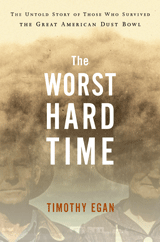A while ago, my new pretend best friend Carl "No, I don't surf" Wilson helpfully defined a
wide and trendy range of musical terms for those of us slow on the linguistic uptake. There's something touchingly generous in this gesture, given its matter-of-fact tone, we're-here-to-help functionality, and limited snarkiness. I choose to ignore his unkind prognosis concerning free jazz -- the term, I guess, not the actual music -- given the book proposal on that subject with my name on it now moldering on or under the desks of a rapidly dwindling number of editors. The article reads like the anti-
Rock Snob's Dictionary, which, while itself amusing and even occasionally clarifying, is ultimately an exercise in pointing fingers at the geeks and laughing. (Not that some of us don't deserve it.) (After occasional appearances in
Vanity Fair, the
RSD is, predictably, soon to be a
book.)
Wilson's piece brings to mind yet again how willfully obscure a lot of music writing can be. What is it about music crit that breeds such insular, crappy prose? There's the fanboy approach, all
enthusiasm, atmospherics, and ridiculously recherche name-dropping; the
track-by-track rehash; the
Bangs/Meltzer homage; the
grad school dissertation; anything at all by
this guy (
for example...). Part of it is a volume problem: too much music, too much writing, too much bandwidth --- a combination that's bound to produce a steaming pile.
For me, the best music writing (and good writing in general) shares a common characteristic of Wilson's writing: generosity. Wilson always seems invested in what he's writing about, and interested in sharing some part of what he knows about it. Not for the sake of one-upmanship, or as a pose, but as the start of some kind of conversation with readers. Crazily enough, he actually seems to want to communicate. A selfish bastard, I know generosity is hard, and I know it when I see it; it's practiced regularly by most writers in the right-hand column, and
many others. The beauty of the blog is that instead of relying on some
musty arbiter of current cultcha to funnel the reviews our way, we can seek out those voices we find most generous. Or whatever characteristic works for you. But you knew that already.
* * * * * *
Bonus bad review, culinary category: From January's
Gourmet magazine [no link], wherein they tested ten toasters, and came up with the following "toasting skills" ratings (verbatim):
1. Truly golden toast; very even and consistent.
2. Golden toast; consistent.
3. Nice toast; consistent.
4. Consistently good toast.
5. Works well; nice toast.
6. Golden toast.
7. Beautiful toast.
8. Good toast.
9. Nice toast.
10. Nice toast, but inconsistent.
The worst entries, unranked, made "tiger-striped toast."
I'm not sure what this list communicates, other than the fact that deep within the test kitchens of
Gourmet there is an intern who has seemingly lost the will to live. I love it, though. I love how the gourmands at
Gourmet can parse the difference between nice toast, good toast, golden toast, and beautiful toast. But my how toaster reviewing has fallen, as evidenced by the thorough going-over provided by the Consumers Union, who really took it to
the toasters of 1939:
Bread was carried slowly through the toasting compartment by a motor-operated conveyor. Must be preheated. No provision for retoasting too light toast. If bread slices not uniform or too large, possibility of their sticking in toaster and burning. Difficulty as to the degree of toasting appreciably without a screwdriver to change adjustment inside toaster. Working parts durably constructed. Plastic base. Method of conveying toast past heating elements makes exceptionally uniform toast.
Ruth, you oughta be ashamed.





